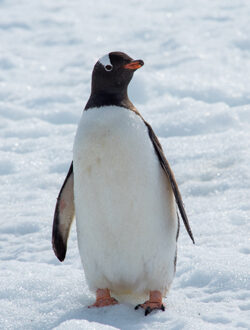Next generation of scientists
The work that McPherson contributed to has a large focus on humpback whales, which seasonally feed on krill in Antarctic waters. This species is also found in the Hawaiian Islands each year during their breeding period in the winter months. While the whales in the Northern and Southern Pacific are separate populations, understanding the health of one can provide valuable insight to the other.
“Training the current and next generation of graduate students, ocean protectors, educators, and conservationists is critical because this is who we are leaving our planet to and in their stewardship,” said Ari Friedlaender, principal investigator of the Antarctica expedition and co-founder of California Ocean Alliance. “We are in an age where new tools and technology are emerging all the time and providing opportunities for smart, eager and creative young students can help us find new ways to study our planet and develop better ways to protect it. I am thrilled for Liah and for how well she has done and look forward to working with her more in the future.”
On a good weather day, researchers searched for whales for four to five hours. Lew deployed a hydrophone to record the Antarctic soundscape. McPherson launched the drone and navigated it above each whale, communicating its behavior to her colleagues and measuring its body condition.
Researchers also collected biopsy samples and photographed each whale’s tail fluke to identify the individuals. Linking these types of data can provide information about the health of both individual whales and the larger population.
“Another awesome aspect of this trip was that we were a three-woman team,” said McPherson. “I think there’s still bias in academia, so it felt great to be part of a skilled team of women—operating boats, drones and crossbows. Working in Antarctica was one of the most valuable and incredible experiences of my life, and something I never dreamed I’d be able to do. I can’t express enough gratitude to Ari Friedlaender and California Ocean Alliance for inviting me to participate in this research effort.”
This opportunity is an example of UH Mānoa’s goal of Enhancing Student Success (PDF) and Excellence in Research: Advancing the Research and Creative Work Enterprise (PDF), two of four goals identified in the 2015–25 Strategic Plan (PDF), updated in December 2020.
For more information, see the MMRP website.
 Unmanned Aerial Vehicle The latest drone news
Unmanned Aerial Vehicle The latest drone news




